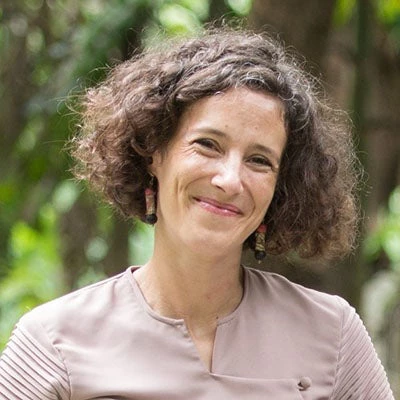 Smart investments in early childhood development can have ripple effects over the life span, improving learning outcomes in primary education and increasing productivity during adulthood. Copyright: Matluba Mukhamedova/World Bank
Smart investments in early childhood development can have ripple effects over the life span, improving learning outcomes in primary education and increasing productivity during adulthood. Copyright: Matluba Mukhamedova/World Bank
The early years of life are critical for children’s physical, cognitive, and socioemotional development, and for shaping their future and ensuring they can reach their full potential. Evidence-based policies and interventions to support children and their families during the preschool years—commonly defined as the four to six year old age range —have been proven to help in breaking poverty cycles, supporting sustainable development, and promoting equity. Moreover, extensive evidence indicates that smart investments during these critical years have ripple effects over the life span of children, improve learning outcomes in primary education, and increase their productivity during adulthood.
Measurement is necessary for smart investments in early childhood
Making a case for investment in this unique development window demands strong evidence, which in turn requires robust measurement tools with accompanying resources to maximize the quality of their implementation. Measurement is at the core of any effort to monitor the status of Early Childhood Development (ECD) national systems, to provide evidence of the impact of ECD interventions on children’s development, or to assess the linkage between the quality of Early Childhood Education and Childcare (ECEC) services, parenting, and children’s skills to succeed in school.
For instance, by measuring and evaluating how familiar young children are with basic principles of literacy and numeracy, such as understanding spoken language or being able to count from one to ten, it is possible to inform stakeholders about the effectiveness and adequacy of preschool curriculum, ECEC teacher training programs, and guidance for caregivers on playful stimulation and learning at home.
Open-source tools measure key ECD outcomes in children from 4 to 6 years old
Acknowledging the relevance of ECD measurement and the importance of ensuring technical quality in this measuring process at scale, the World Bank has developed a set of measurement tools and resources to support their use. The Anchor Items for the Measurement of Early Childhood Development (AIM-ECD) open-source tools are designed to measure early childhood developmental outcomes and competencies that allow for comparability across countries without sacrificing local relevance. The contents of these tools were selected after analyzing Measure of Early Learning Quality and Outcomes data from from 12 low- and middle-income countries located in diverse world regions in order to identify items with robust psychometric properties across countries.
The AIM-ECD tools measure early literacy, early numeracy, executive functioning, and socioemotional development in children aged 4 to 6 years old. Depending on objectives and context, measurement can be carried out using two different tools: a direct assessment and a caregiver report. The direct assessment can be used when administering tasks to young children is possible and appropriate. The caregiver report is more appropriate when, for example, children cannot interact in the assessment process. It allows researchers to gather indirect information about children’s development by interviewing their parents, caregivers, or other adults (e.g., teachers).
Additional material in multiple languages to support the quality implementation of AIM-ECD
Beyond the tools, additional materials have been developed to support every step of the AIM-ECD implementation process, including translation and adaptation, enumerator training, administration and scoring, data analysis, and results reporting. The tools and resources are available in English, Arabic, French, Portuguese, Russian and Spanish to promote the global scale-up of ECD measurement activities.
Comparable evidence using AIM-ECD is accumulating
Since its launch in 2021, AIM-ECD has been implemented in more than ten countries as a stand-alone assessment or together with other tools such as the Global Scales for Early Development, the Early Childhood Development Index 2030, and Teach ECE. This joint administration of AIM-ECD and other ECD and ECEC measurement tools can help to increase our current understanding of early childhood development and learning in low- and middle-income countries. It will also provide relevant information to guide ECD and ECEC policy decisions with evidence.
Future efforts to scale up the use of AIM-ECD include the integration of the caregiver report into regular household surveys and online learning modules to support enumerator training to support roll out at scale. By scaling up AIM-ECD, we hope to provide policymakers, researchers, and practitioners with better data on child development in the preschool years, both nationally and internationally, which will contribute to improve systems for all children.
Visit the AIM-ECD website to learn more about these tools and resources!
AIM-ECD is part of the global efforts in early childhood development by the Early Learning Partnership to promote research and inform policy on children’s early years and their education and was designed to help countries in diverse settings assess and improve early childhood at scale.
We would love to hear from you! Do you have ideas or suggestions for us? Would you like to implement AIM-ECD in your context? Please contact our team with your suggestions, comments, and ideas for collaboration.
We would like to acknowledge the contribution and commitment of all our team members, including Adrien Ciret, Elaine Ding, Estefania Avendaño, Jonathan Seiden, Kesha Lee, and our broader team as part of the Early Learning Partnership. The development of the AIM-ECD materials was possible with the financial support of the Early Learning Partnership.





Join the Conversation